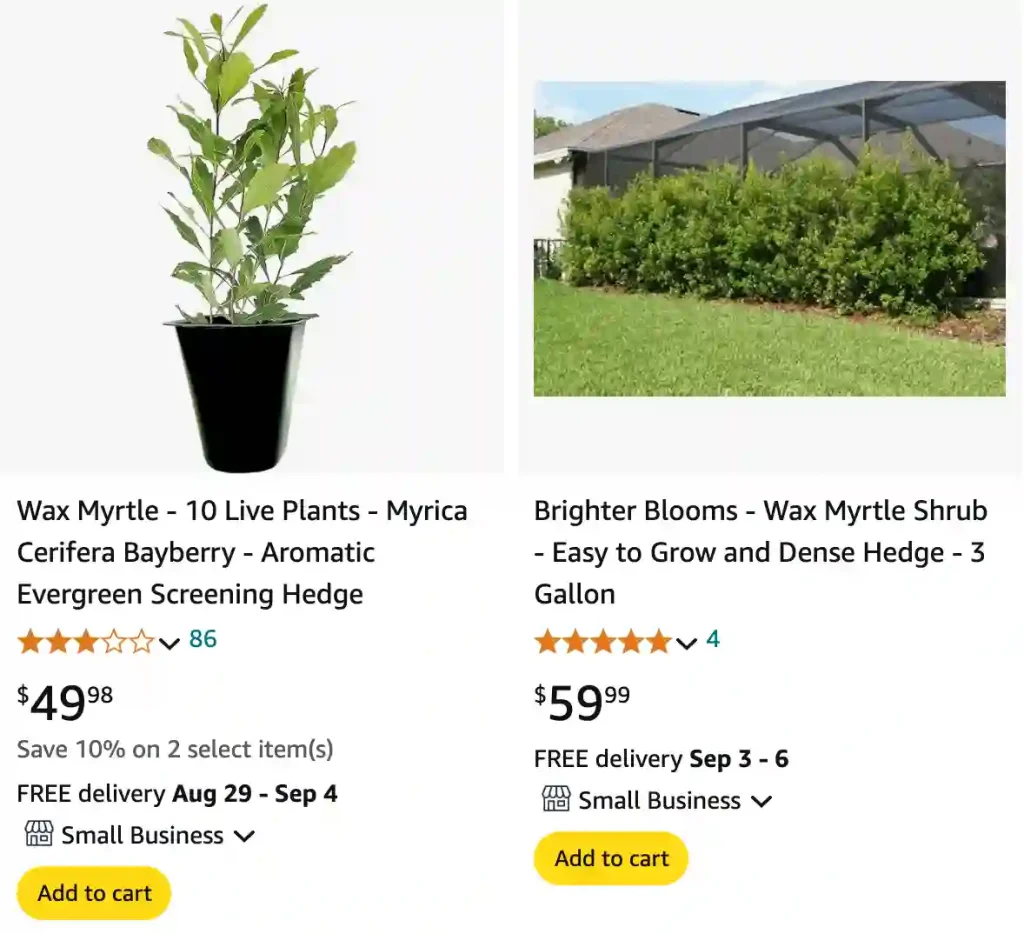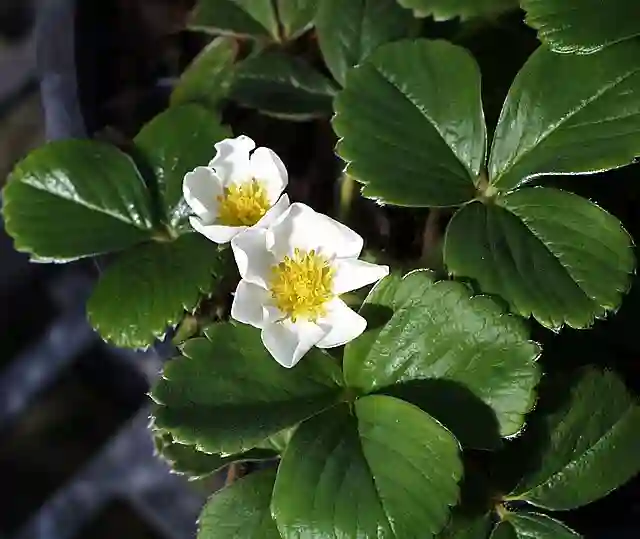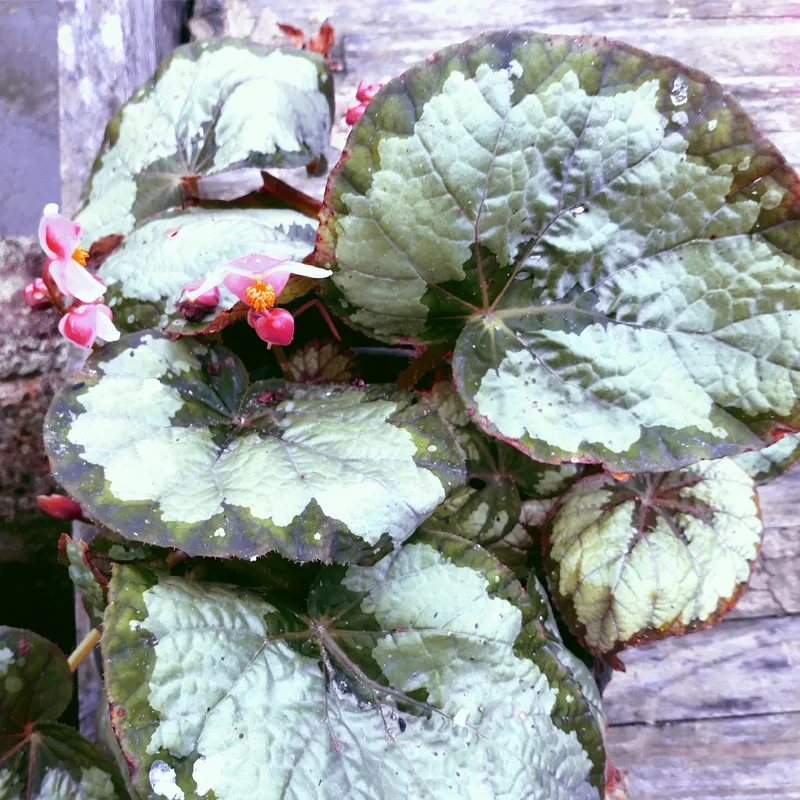
FAQs About Wax Myrtle
When I first encountered Wax Myrtle, I was intrigued by its unique characteristics and potential as a landscaping plant. Here’s a collection of FAQs about Wax Myrtle that might help you understand this plant better.
What Is a Wax Myrtle?
Wax Myrtle (Myrica Cerifera), also known as Southern Bayberry or Candleberry, is a versatile shrub native to the southeastern United States. It’s appreciated for its aromatic leaves and waxy, berry-like fruit. The plant is commonly used in landscaping for hedges and screens due to its dense foliage and ability to tolerate various soil conditions.
50 Species in Genus Myrica
Is Wax Myrtle Evergreen?
Yes, Wax Myrtle is evergreen. This means it retains its foliage year-round, providing consistent greenery and privacy. Its leathery leaves add a touch of lushness to any garden throughout all seasons.
How Fast Do Wax Myrtles Grow?
Wax Myrtles are known for their rapid growth. On average, they can grow 1 to 2 feet per year, reaching heights of up to 15 feet or more. This makes them an excellent choice for quickly establishing a hedge or privacy screen.
When to Plant Wax Myrtle?
The best time to plant Wax Myrtle is in the spring or fall. These seasons offer moderate temperatures and adequate moisture, helping the plant establish strong roots. Avoid planting during extreme temperatures or drought conditions for the best results.
How Far Apart to Plant Wax Myrtle?
If you’re using Wax Myrtles for a hedge or screen, plant them about 3 to 5 feet apart. This spacing allows them to fill in and create a dense barrier without overcrowding. For individual plants or smaller landscaping uses, adjust the spacing based on your design and space requirements.
How to Propagate Wax Myrtle?
Propagating Wax Myrtle is relatively straightforward. You can propagate it from seeds or cuttings. For seeds, sow them in a well-draining seed mix and keep them moist until they germinate. For cuttings, take 4 to 6-inch segments from healthy plants, remove the lower leaves, and plant them in a pot with rooting hormone and a moist, well-draining medium. Keep the cuttings in a warm, humid environment until roots develop.
Do Wax Myrtles Flower?
Wax Myrtles do produce small, inconspicuous flowers in late spring or early summer. These flowers are typically not showy but are followed by the plant’s distinctive waxy, berry-like fruit. While the flowers aren’t the main attraction, they contribute to the plant’s overall appeal.
Are Wax Myrtles Poisonous to Dogs?
Wax Myrtles are generally considered non-toxic to dogs. However, it’s always a good practice to monitor pets to ensure they don’t ingest large quantities of any plant material. If you suspect your pet has consumed part of a Wax Myrtle, consult your veterinarian for advice.
Do Deer Eat Wax Myrtle?
One of the great benefits of Wax Myrtle is its deer resistance. Deer typically avoid feeding on this plant due to its aromatic leaves, which are less appealing to them. This makes Wax Myrtle a good choice for areas prone to deer browsing.
Do Wax Myrtles Repel Mosquitoes?
Wax Myrtle is reputed to have mosquito-repelling properties. The aromatic oils in its leaves can act as a natural deterrent for mosquitoes. While it might not eliminate them entirely, planting Wax Myrtle can help reduce their presence in your garden.
How to Care for Wax Myrtle?
Caring for Wax Myrtle involves a few key practices:
- Watering: Regular watering is important, especially during dry periods. Wax Myrtles are relatively drought-tolerant once established but will thrive with consistent moisture.
- Pruning: Prune Wax Myrtles to maintain their shape and remove any dead or damaged branches. Regular pruning helps promote a dense, attractive form.
- Soil: They prefer well-draining soil but can adapt to a variety of soil types. Ensure good drainage to prevent root rot.
- Fertilizing: Apply a balanced fertilizer in the spring to support healthy growth. Follow the manufacturer’s instructions for application rates.
What to Plant With Wax Myrtle?
Wax Myrtle pairs well with other native plants that complement its growth habits. Consider planting it with flowering perennials, ornamental grasses, or other shrubs that match its growth requirements and aesthetic. Combining different textures and colors can create a dynamic and attractive landscape.
Common Problems with Wax Myrtle
While Wax Myrtle is generally low-maintenance, it can occasionally suffer from issues such as:
- Leaf Spot: This fungal condition causes dark spots on the leaves. Proper spacing and good air circulation can help prevent it.
- Scale Insects: These pests can infest the plant, leading to a decline in health. Regular inspection and appropriate insecticide treatment can manage infestations.
By understanding these aspects of Wax Myrtle, you can make the most of this versatile and resilient plant in your garden. Whether you’re looking for an attractive hedge, a privacy screen, or a plant with additional benefits like mosquito repellent properties, Wax Myrtle is a worthy choice.
If i die, water my plants!



